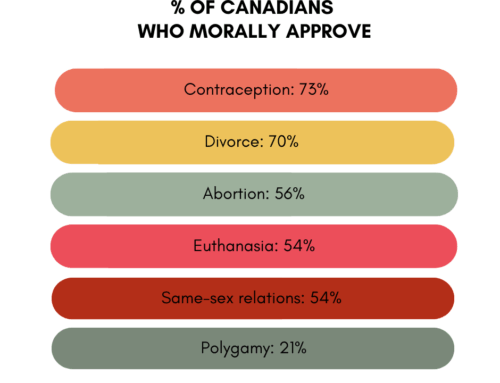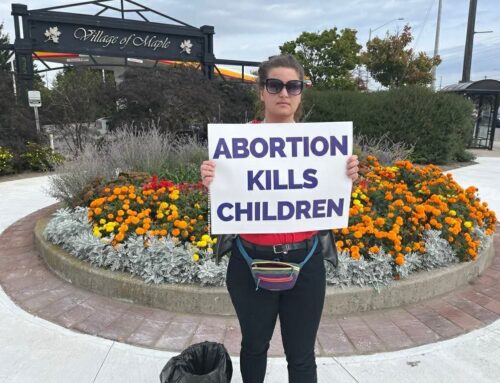Prior to enactment of the Medical Assistance in Dying (Bill C-14) in 2016, pro-lifers warned that this pernicious legislation would mark but the first, fatal step down an exceedingly slippery slope toward ever broader legal scope for physicians to intentionally kill their vulnerable patients.
Proponents of euthanasia scoffed. In a report released in 2011, the self-styled expert panel of the Royal Society of Canada on “End-of-Life Decision Making” claimed: “Despite the fears of opponents, it is clear that the much-feared slippery slope has not emerged following decriminalization, at least not in those jurisdictions for which evidence is available.”
Notwithstanding that assertion, the Royal Society experts also frankly conceded in this same report: “Legalisation of assisted dying inevitably involves further discussion of the boundaries of what is permissible. Should it, for example, be allowed for types of suffering that do not originate from physical diseases per se, such as being tired of life at a very old age?”
Clearly, pro-lifers were right: Legalized euthanasia, like legalized abortion, might begin under fairly restrictive conditions, but will soon give way to a veritable epidemic of deliberate, physician-afflicted death.
Consider in this respect the Netherlands. There, the process of legalizing euthanasia originated in 1971, when Dr. Geertruida Postma, a family physician, murdered her frail mother with an overdose of morphine.
While Postma’s mother was deaf and partially paralyzed and had repeatedly pleaded with Postma to kill her, consent to death by the victim was not at that time a defense in Dutch law against a murder charge. (The same was also true of Canada until our judicial masters granted Canadian physicians an exemption from this murder provision in the 2015 Cartercase.) As a result, Postma was duly charged and convicted of murder.
However, having deemed that Postma was motivated by compassion in murdering her mother, the trial judge let her off with only a suspended sentence of one week in jail plus a year on probation. Furthermore, the judge laid down as a new legal rule that a physician can deliberately kill a patient or assist in the suicide of the patient, if the patient is incurably sick, suffering unbearably and clearly wants to be killed.
With this high-handed ruling, the Dutch court flouted the parliament of the Netherlands, violated the separation of legislative and judicial powers, and proceeded on its own to sanction euthanasia in some conditions. Since then, legalized euthanasia in The Netherlands has been extended to the point that Dutch physicians can now legally kill even psychologically troubled youths, physically handicapped infants and demented adults who, at the time of death, cannot give informed consent to having their life terminated.
Recently, the Dutch cabinet commissioned a study of a proposal to entitle elderly persons to physician-assisted suicide even if they are neither sick nor unbearably suffering, but only “tired of living” (levensmoe).
Among Dutch advocates of euthanasia, opinions on this initiative differ. While some agree with the suggestion of the expert panel of the Royal Society of Canada that “only very old” people who are not sick, but simply tired of life should qualify for physician-assisted suicide, others, like Pia Dijkstra, an influential euthanasia advocate and member of the Dutch parliament, have suggested that a minimum age of 75 might be appropriate.
In Canada, the progression toward ever more permissive euthanasia is also proceeding, but at an even faster pace than in the Netherlands. Barely three years ago (2016) in Bill C-14, Parliament stipulated that legalized euthanasia should be confined to adults who were mentally competent and so physically sick that their death was “reasonably foreseeable.” Now, in the opinion of federal Justice Minister David Lametti, these limits are already far too restrictive. In an interview with Radio Canada on Dec. 11, he not only promised to “move heaven and earth” to meet a March deadline, arbitrarily set by the Quebec Superior Court, for removing terminal illness as a requirement for euthanasia, but also said he is open to extending euthanasia to youths age 14 to 17 as well as to mentally incompetent adults afflicted with neurodegenerative diseases like Parkinson’s, Alzheimer’s and dementia.
For pro-life physicians, the outlook is particularly ominous. In a ruling on May 15, the Ontario Court of Appeal unanimously held that a physician who refuses on grounds of conscience to commit euthanasia, assisted suicide or abortion-on-demand must effectively refer a patient who qualifies for one of these procedures to a physician who is willing to help kill the patient or the patient’s baby in the womb, as the case might be. Correspondingly on Dec. 31, British Columbia Health Ministry threatened to cut off funding on Feb. 3 from the Irene Thomas Hospice in Ladner, B.C., if the facility did not start permitting euthanasia on its premises. Non-faith-based-palliative care facilities (like Ladner) will no longer be funded by the B.C. provincial government.
What can pro-life physicians, nurses, pharmacists, hospital administrators and the rest of us do in the face of this mounting pressure from the euthanasia and abortion lobbies? Alexandr Solzhenitsyn had some good advice: “Let your credo be this: Let the lie come into the world, let it even triumph. But not through me.”





